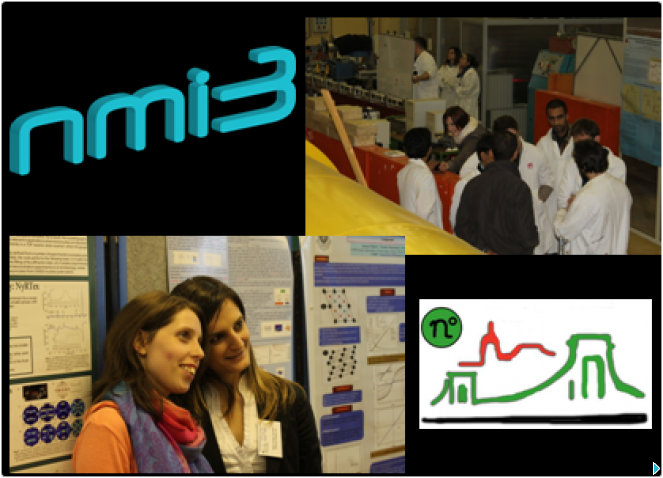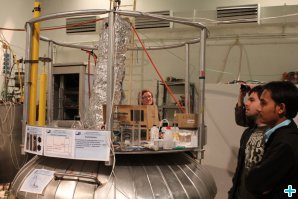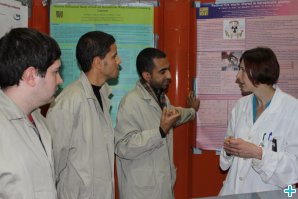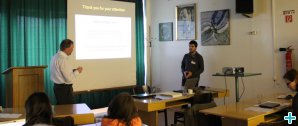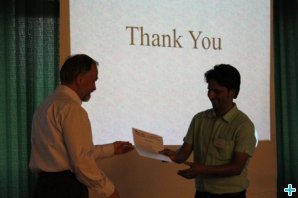CETS 2013 – conversations with the participants
Central European Training School
By Inês Crespo, Information Manager, 31/07/2013
The 2013 edition of the Central European Training School, supported by NMI3, took place in 27 – 31 May in Budapest, Hungary. We attended the school to promote NMI3 and to talk with the school's participants and organisers. Lazslo Rosta is the scientific coordinator of the Budapest Neutron Centre since 1992 and the director of CETS. With over 40 years of experience in neutron research, he was the right person to ask all about CETS.
A bit of history
The history of the school goes back to 1999. The second European Neutron Scattering Conference (ECNS) took place in Budapest and Lazslo Rosta was the chair of the conference. It was then decided to organise a 2-day school just before the conference, so that outstanding scientists taking part of ECNS could be invited to give lectures. A special effort was made to provide grants for young people to attend the conference, and therefore ECNS'99 could count with nearly 150 young scientists who receive a grant to attend. The lecture's booklet was such a success that it was re-printed for the following 6 years.

By then there was a wish among the scientific community to have hands-on training in neutron scattering techniques. BNC together with Austria have thus organised the first Central European Training School (CETS) in 2001, where it was possible to perform real experiments and initiate researchers in the use of neutron scattering equipment. The school was then bi-annual and limited to 30 participants in order to have not more than five people per instrument.
Deciding on the School Programme
The aim of CETS is to provide insight into varied neutron scattering techniques and their application for studies on structure and dynamics of condensed matter.
The instruments available at the BNC are therefore the focus when deciding on the school programme each year. For instance, next year participants will most probably be able to use the new focusing small angle scattering instrument as an instrument for training.
Moreover, some school sessions include a day dedicated to a special topic. Last year, cultural heritage was the selected theme and the school organisers could take advantage of the BNC's participation in the project CHARISMA. Next year, the special day might be dedicated to data treatment using the so-called Event Recording Technique, which was for the first time used in neutron scattering experiments at BNC.
The Participants
CETS'2013 counted with about 25 participants between 23 and 47 years old, coming from different countries around the globe. With a varied scientific background such as diverse branches of physics or chemistry, material science, biology, environmental science and organic electronic they nevertheless have a common interest in applying neutron scattering to characterise their own samples for their work and therefore extending their knowledge on the techniques available.
In the interviews, everyone stated to have enjoyed the practical lessons, which were a valuable chance of interacting with various researchers, expertise, and cultures. For the future, most attendees plan to remain in research, while a number of them would like to enroll with industry.
Real Science
This year, among the school highlights were the practical lessons. A number of lecturers and students brought their own samples and could examine them during the school. This was a great hands-on training to the participants who could better understand the techniques available in a neutron facility to analyse their samples.
In fact, people attending CETS often submit a proposal to come a few months later to perform experiments at the BNC and apply what they have learned in their own research work. Laszlo Rosta certainly encouraged everyone to do so.
To apply to the school, interested researchers need to submit a paper as well as to prepare a poster and a small presentation. This is very stimulating for the students because to many this is the first time they expose their work in an international environment.
I personally attended the flash- and poster presentations by the students and witnessed that everyone was very motivated to explain their research work in detail and could receive insightful feedback from the lecturers. Congratulations to the students for their presentations and posters! These discussions have indeed fostered new research ideas, as you can hear in the video.
NMI3 support to CETS
According to Lazslo Rosta, the financial support given by NMI3 is fundamental to ensure a stable number of participants who can have their travel expenses covered. Since the new funding programme for the Neutron and Muon European Schools that started in 2012, CETS is part of a group of selected schools that will receive NMI3 support for a 4-year period. This facilitated the school's organisation and CETS can more easily plan an annual event.
NaMES bring all the school directors together in regular meetings where they can collaborate, share experiences, and get insights into how to improve the schools. Fruitful ideas were indeed born in these meetings, an example being the flash-presentation session now implemented in CETS.
The future of CETS
The Budapest reactor will operate until 2023 with an increasing energy capacity. Around Europe there are currently new neutron research facilities being built, as for instance the European Spallation Source. Training future generations of scientists to work in these facilities is therefore necessary. The CETS organisers are well aware of this issue and will use these ideas to shape the path and structure of the school's future editions.
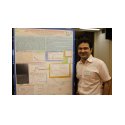
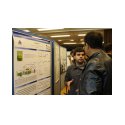
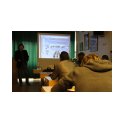
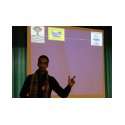
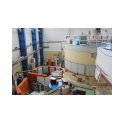

For more information about the schools supported by NMI3 please visit our Education pages.
